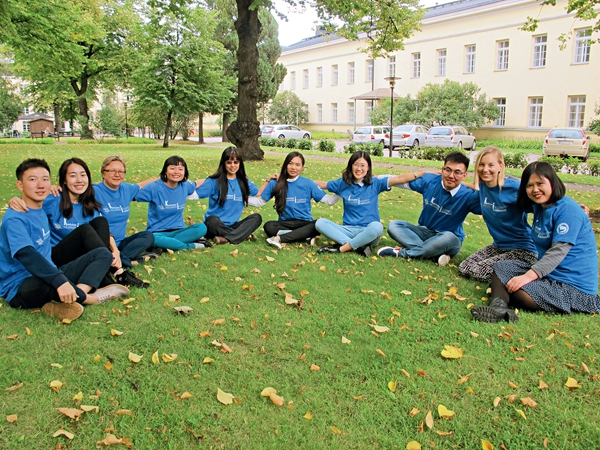The Globalization Pace of Confucius Institutes
China Today by Li Jie, April 26, 2017 Adjust font size:
Global Layout
“Confucius Institutes have developed at a rate beyond our expectations,” said Xu Lin, the former chief executive of the Confucius Institute headquarters. The Ministry of Education initially planned to set up 100 Confucius Institutes worldwide within a decade.
To the surprise of all concerned, 46 Confucius Institutes were built around the world the first year, and the number reached 100 the year after. After 12 years, there are now 511 Confucius Institutes in 140 nations across five continents.
|
|
|
Teaching team of the Confucius Institute at the University of Helsinki. |
The development pattern of Confucius Institutes has extended far beyond basic Chinese language teaching. Originally an associate professor of the English Department at Renmin University of China, Wang has been Chinese dean of the Confucius Institute at the University of Helsinki since 2014. This has entailed teaching Chinese language and holding Chinese-culture-themed activities with Chinese teachers and volunteers; also inviting Chinese scholars to Finland to give lectures and exchange ideas. Finnish students are also encouraged to study in China.
“Chinese language teaching is our foundation, cultural activities expand our impact, and academic activities draw the attention of more scholars and intellectuals to China.” After two years’ experience, Wang is clear about the purpose of her work.
Although one constitution applies to all Confucius Institutes, conditions vary in different countries. So what should the Confucius Institutes do? Integrating and being welcomed into the local community is a test for each one. In the process of teaching, her unfamiliarity with the local culture has at times put Wang in embarrassing situations. Practice has resolved this problem. Owing to Finland’s high altitude, and low temperatures and short daylight hours in winter, cultural activities at the Confucius Institute at the University of Helsinki focus on sunshine and warmth. And because of the generally introverted nature of the Finnish people, the Confucius Institute gives rein to students’ strengths by laying emphasis on the teaching of Chinese writing.
Li was responsible for teaching a children’s Chinese language class in Ireland. Their first impressions of China came almost entirely from her descriptions. But she gradually realized that simply emphasizing the “importance” or “meaning” of the teaching content did not register with them. They became far more engaged through contact with and use of specifically Chinese items such as opera masks, shuttlecocks, and paper fans. “Interest is the key to arousing in children their spirit of exploration,” Li said. “They most enjoy finding out about Chinese culture and life through such activities.”
In 2016, to meet local demands, over 240 Confucius Institutes in 78 countries throughout the world instituted Chinese culture-related courses such as traditional Chinese medicine and Tai Chi. Confucius Institutes that specialize in textiles, dance and performance, music, food and tea culture have also been globally set up. Adjusting to local conditions is the way for each Confucius Institute to take root and gain development in its host country.
